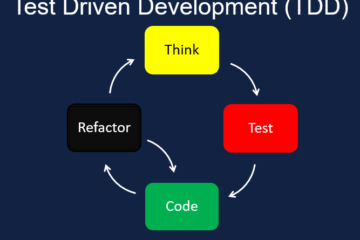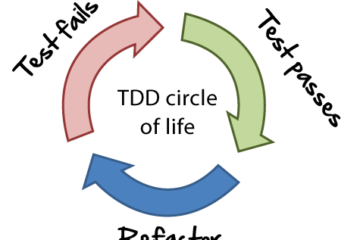Is automating usability testing in CI/CD pipeline possible?

On the off chance that your organization isn’t trying its product constantly, you’re in a maze. As the requests of the market increasingly rise to have more programming at quicker paces of delivery, it’s impossible that an organization can depend on manual testing for a larger part of its quality affirmation exercises and stay cutthroat. Automation is crucial for the CI/CD cycle, particularly usability testing (ease of use testing).
Serious organizations mechanize their testing interaction. That is good to know. The thing which is not good is that normally the extent of automation is restricted to client conduct testing that is not difficult to imitate, for instance, last & performance, and behavioral testing. The more muddled tests based on human elements are commonly passed on to efficiency-challenged manual testing.
The outcome: an organization can have lightning-quick tests executing in certain pieces of the delivery interaction just to be eased back to an agonizingly slow clip when human elements testing should be obliged. There are ways by which human elements testing can be robotized inside the CI/CD interaction. Try to comprehend where human interaction in the testing system is essential, building automated processes obliging those limits.
The Four Aspects of Software Testing
To comprehend where human elements testing begins/stops, it’s valuable to have an applied model by which to fragment software testing by and large. One model isolates application testing into four angles: functional, last and performance, security, and usability testing. The following table explains.
| Type of Testing | Brief Explanation | Example |
| Behavioral/Functional | Examines that the software behaves as expected relative to operational logic/algorithmic consistency. | Component & Unit tests; integration & UI testing |
| Last/Performance | Controls a software system’s responsiveness, accuracy, integrity, and stability under particular capabilities, and operating environments. | Scalability, robustness, CPU and memory utilization testing |
| Penetration/Security | Examining the security loopholes in the system by applying ethical hacking techniques in order to intrude into the system | Penetration, authentication, and malware injection tests |
| Usability | Decides how simple and easy it is for a particular area of users to interact with the given software / App | Human-computer interaction efficiency, information preservation, and input accuracy testing |
Human Driven Tests versus Data-Driven Tests
Given the data mentioned above, it’s a good idea that Behavioral/Functional, Last/Performance, and security testing gets much of the consideration with regards to automation. These tests are machine-focused and quantitative – data in/out, which can all be effectively machine-started running under script. Things get more muddled with ease-of-use (usability) testing.
Usability (ease of use) testing requires arbitrary, gestural information that must be given by a human. Thus, making an automated process for this test type is troublesome. It’s not simply an issue of producing data and applying it to a page with a test script. The human way of behaving is difficult to imitate through the script. Imagine the track of usability testing (for convenience) on a page for ideal information productivity. The speed at which a human enters information will shift as indicated by the format and language of the page as well as the intricacy of information to be enrolled. We can compose content that expects the human way of behaving about the information section, yet to get an exact picture, it’s smarter to have people play out the undertaking. All things considered; the objective of a convenience test is to assess the human way of behaving.
To be feasible in a Continuous Integration/Continuous Delivery process, testing should be computerized. The inquiry then becomes, how might we robotize convenience and different sorts of human variables testing when, right away, they appear to be past the abilities of robotization? The response: overall quite well.
Automate however much as could be expected
Regardless of anything else sort of testing you are playing out, it will be important for a cycle that has basically four phases: Test setup, execution, breakdown, and analysis.
With regards to making proficiency in a CI/CD cycle, try to automate so a lot, while perhaps not all, of a given stage as could be expected. A few sorts of tests loan themselves well to automate in all stages; others will not. It’s critical to comprehend where the constraints of automation in each test all through the four stages.
Full automation is attainable during behavioral/functional and Last / Performance tests
For behavioral/functional and Last/Performance testing, automating each of the four phases is straightforward. You can compose content that (1) assembles information, (2) applies it to an experiment, and (3) resets the testing environment to its underlying state. Then, you can make the experimental outcomes accessible to other content that (4) investigates the resultant information, passing the examination to closely involved individuals.
Security testing requires some manual convenience
Security testing is a piece harder to computerize in light of the fact that the absolute test arrangement and teardown may include explicit equipment convenience. Once in a while, this comprises just a change of the arrangement settings in a text document. Different examples could require the human rearranging of switches, security gadgets, and links in a server farm.
Ease of use tests have a unique arrangement of difficulties
Convenience testing adds a level of intricacy that challenges robotization. Test arrangement and execution require human movement coordination. For instance, assuming you’re directing an ease-of-use test on another portable application, you really want to ensure that human guinea pigs are accessible, can be noticed, and have legitimate programming introduced on the suitable equipment. Then each subject needs to play out the test normally under the direction of a test director. All of this requires a lot of coordination exertion which can dial back the testing system when done physically.
Albeit the genuine execution of an ease-of-use test should be manual, the greater part of different exercises in the arrangement, teardown, and investigation stages can be robotized. You can utilize auto schedulers to deal with a huge part of the arrangement (e.g., searching and coordinating testers to a testing site). Additionally, automation can be integrated into the arrangement of the applications and equipment required.
As far as noticing testers, you can introduce programming on the system under test that will gauge console, mouse, and screen action. Some ease-of-use labs will record testers’ conduct on record. Video documents can then be taken care of by AI algos for design acknowledgment and different sorts of investigation. There’s a compelling reason need to have a human survey each second of recorded video to decide the result.
The key: focus on those test exercises that should be performed by a human and automate the excess assignments. Disconnecting manual testing exercises into a very much limited time box will go far toward making usability (ease of use) testing in a CI/CD interaction more unsurprising and more productive.
Conclusion
A few parts of app/software testing, for example, behavioral/functional and last & performance testing are automation amicable. Others, for example, security and usability testing, require episodes of manual inclusion, in this manner making test automation a test. You can abstain from having manual testing become a bottleneck in the CI/CD cycle by guaranteeing that the degree, event, and execution season of the manual testing exercises, especially those around ease-of-use tests, are notable. The risk comes about while manual testing turns into an eccentric black box that destroys time and cash seemingly forever.
Want to learn more: Here is a Kindle edition of the book Handbook of Usability Testing: How to Plan, Design, and Conduct Effective Tests 2nd Edition.
Read also on this blog: How TDD works.



0 Comments